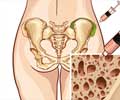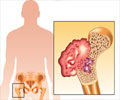Human bone tissue grown in the lab from stem cells of the patient was injected in the arm to facilitate growth of the injured bone.
Highlights
- Stem cells in fat tissue were grown under sterile conditions to form bone tissue.
- The semi-liquid bone graft was then injected to the patient in need of the transplant.
- The injected cells multiply until sufficient material is created to fill the missing area.
Bonus BioGroup based in Israel introduced the lab-grown semi-liquid bone graft. In a clinical trial done in 2016, the bone graft was grown from the patient’s own fat cells and was injected into the jaws of 11 people to repair bone loss. The material hardened in a couple of months and merged with the existing bone to complete the jaw.
The technique involves growing bone under sterile laboratory conditions from stem cells in fat tissue taken from the patient in need of the bone transplant.
After two weeks, the bone graft is transported from the company’s lab and production facility to the medical center performing the transplantation in a ready-to-use syringe. Over time, the injected cells multiply until sufficient material is created to fill the missing area.
Stem Cells Grown Into Bone Tissue
Medical procedures, injuries, illness can damage bone. In bone cancer, the tumor is usually removed along with the bone. Even though the bone has traits that allow it to grow, it will not be able to grow the distance between the bone ends removed by surgery. So it usually means that a hand or leg is lost in the process.
“The special features of the implants enable preservation of cell properties during implantation and the creation of a high-quality bone functioning in the transplanted area,” he said.
Source-Medindia













